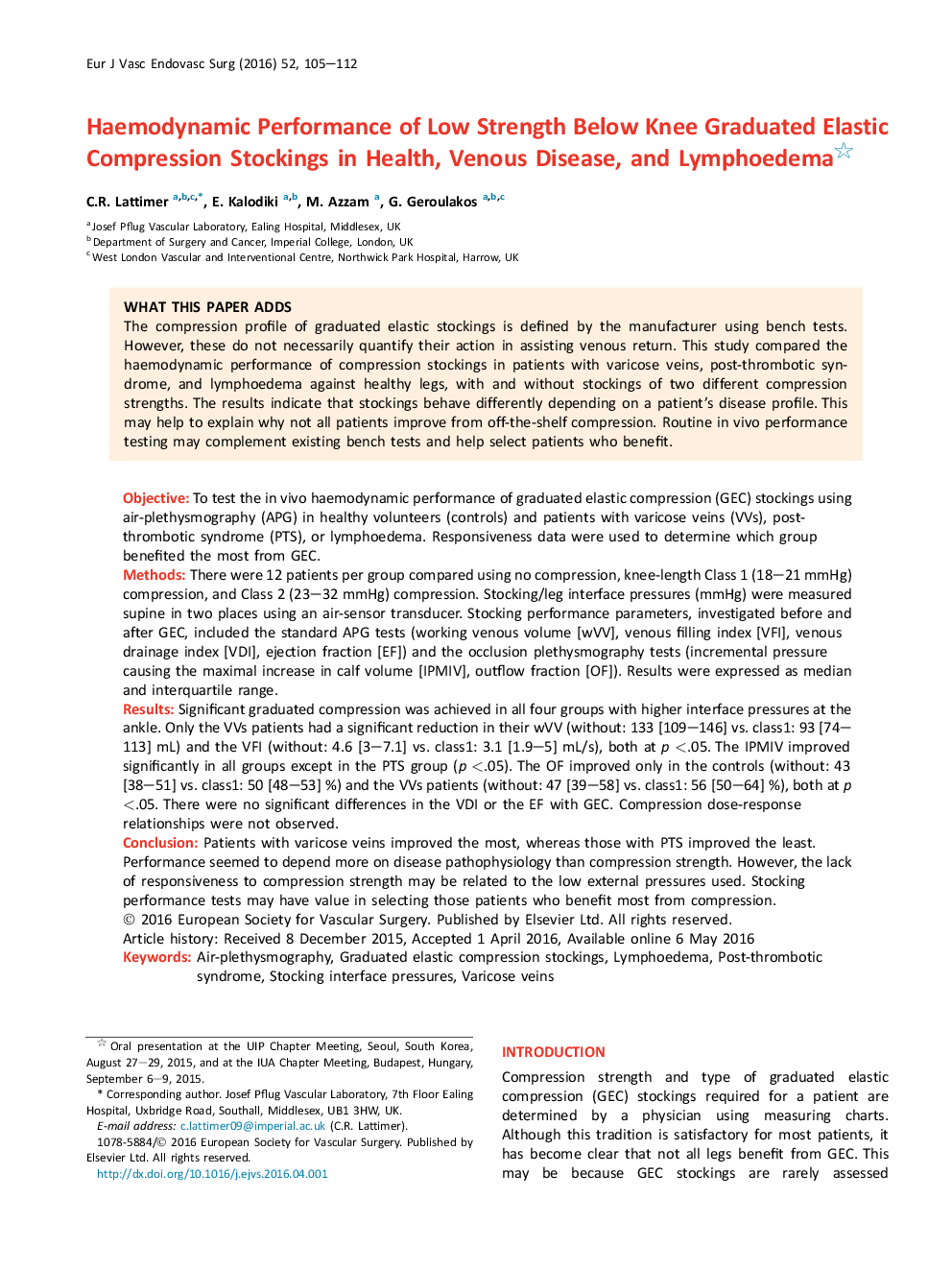| کد مقاله | کد نشریه | سال انتشار | مقاله انگلیسی | نسخه تمام متن |
|---|---|---|---|---|
| 2911651 | 1575428 | 2016 | 8 صفحه PDF | دانلود رایگان |

ObjectiveTo test the in vivo haemodynamic performance of graduated elastic compression (GEC) stockings using air-plethysmography (APG) in healthy volunteers (controls) and patients with varicose veins (VVs), post-thrombotic syndrome (PTS), or lymphoedema. Responsiveness data were used to determine which group benefited the most from GEC.MethodsThere were 12 patients per group compared using no compression, knee-length Class 1 (18–21 mmHg) compression, and Class 2 (23–32 mmHg) compression. Stocking/leg interface pressures (mmHg) were measured supine in two places using an air-sensor transducer. Stocking performance parameters, investigated before and after GEC, included the standard APG tests (working venous volume [wVV], venous filling index [VFI], venous drainage index [VDI], ejection fraction [EF]) and the occlusion plethysmography tests (incremental pressure causing the maximal increase in calf volume [IPMIV], outflow fraction [OF]). Results were expressed as median and interquartile range.ResultsSignificant graduated compression was achieved in all four groups with higher interface pressures at the ankle. Only the VVs patients had a significant reduction in their wVV (without: 133 [109–146] vs. class1: 93 [74–113] mL) and the VFI (without: 4.6 [3–7.1] vs. class1: 3.1 [1.9–5] mL/s), both at p <.05. The IPMIV improved significantly in all groups except in the PTS group (p <.05). The OF improved only in the controls (without: 43 [38–51] vs. class1: 50 [48–53] %) and the VVs patients (without: 47 [39–58] vs. class1: 56 [50–64] %), both at p <.05. There were no significant differences in the VDI or the EF with GEC. Compression dose-response relationships were not observed.ConclusionPatients with varicose veins improved the most, whereas those with PTS improved the least. Performance seemed to depend more on disease pathophysiology than compression strength. However, the lack of responsiveness to compression strength may be related to the low external pressures used. Stocking performance tests may have value in selecting those patients who benefit most from compression.
Journal: European Journal of Vascular and Endovascular Surgery - Volume 52, Issue 1, July 2016, Pages 105–112